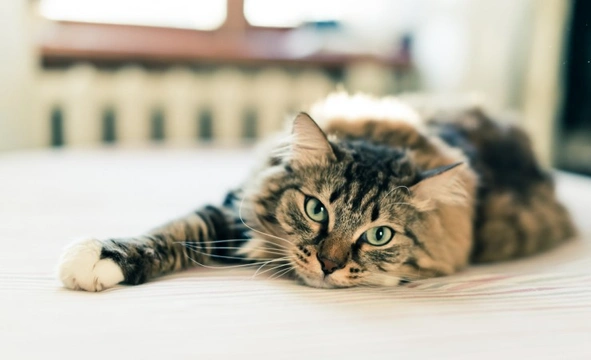
Taking care of your cat’s paws and claws
Cats are very self-sufficient when compared to dogs in a whole range of different ways, and tend to need much less human intervention in the way of regular care and grooming (with the exception of very longhaired cats like the Persian) than most types of dogs. However, cat owners should still take the time to check their cats over regularly to make sure that they are well and not showing any signs of injuries or ill health, and there are several things that cat owners should do regularly to keep their cats in good condition, including paying some attention to their paws and claws.
In this article, we will share some tips and advice on taking care of your cat’s paws and claws, including some of the most common issues that can arise in this area and how to deal with them, in order to keep your cat’s feet in good condition and recognise any problems in the making. Read on to learn more.
Getting to know your cat’s norms
Most cats have five toes on their front feet and four on the back, but there are some exceptions in the form of polydactyl cats, so if you haven’t already, count your cat’s toes now to make sure you know for sure! Each toe will also have a claw connected to it, unless of course the cat has been de-clawed for some reason (such as an accident, or if the cat was imported from America) or if they have lost a claw previously and it has not re-grown.
Cat’s paws are flexible and hardy, and their claws are necessary to allow them to defend themselves, and also to climb and provide traction, and generally, day to day life will help to keep your cat’s claws at a healthy length.
It is important to provide a scratching post or mat for your cat to use to claw, in order to keep their claws in good condition and exercise the muscles of the toes!
Checking over the paws
Cats generally groom their own paws very thoroughly as part of their regular ablutions, and you may sometimes see them nipping or gnawing at the space between their toes to remove grit or dirt too! However, if your cat seems overly preoccupied with grooming their paws or as if they have something lodged in there that they can’t remove, you may need to check this out.
Small particles of grit and things like grass seeds can become lodged between the paws or in the sheath of the claws, which over time, will lead to irritations, sores and small abscesses, and so it is important to remove such debris to prevent later problems from occurring.
It is also a good idea to keep an eye on your cat’s feet when the weather is icy or snowy, as ice and snow can become impacted between the toes, or build up on the fur of the paws, leading to discomfort and potentially, pain.
Paw problems
If you spot a foreign body wedged between your cat’s toes or claws, you may well be able to remove this simply and easily with some blunt tweezers, but many cats will be rather wriggly when you try to do this, so try to get them used to having their paws checked and handled when they are still young.
If you spot a thorn or another foreign body stuck in the pad of the paws, again, remove this if possible, taking care to ensure that you remove all of it and don’t break it off with part of it still in the paw. Then, keep a close eye on the area affected, to ensure that it does not later become infected.
If you cannot manage to remove such objects yourself, or are worried about the risk of infection, pop your cat along to the vet to do this for you. Cats also occasionally have problems with their claws, such as tearing a claw, split claws and overly long claws that might become ingrown.
If your cat’s claws do grow very long and begin to curve inwards, you should trim them down before they get so long as to pose a risk of becoming ingrown. If you do find that your cat has an ingrown claw, take them to the vet to have this dealt with professionally.
If your cat appears to be limping or favouring one leg, start by checking the paws over, as injuries and foreign bodies in the paws are often the cause. Minor grazes, scratches and abrasions on the paws will usually heal on their own without a problem, as long as you monitor them carefully for signs of infection, but if the paws are bleeding, badly damaged or if a claw is bleeding, loose or very painful, you should take your cat along to the vet.



